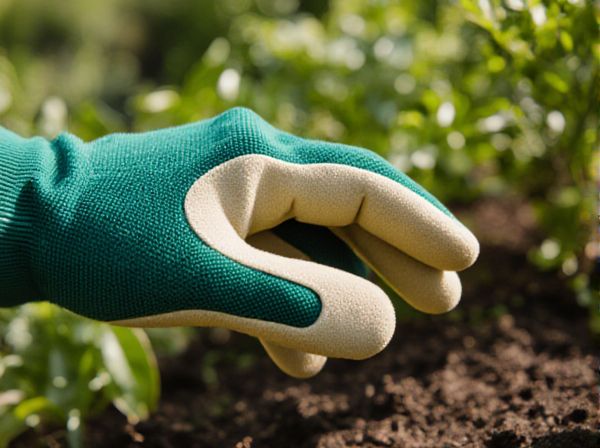
Hardening Off vs Overwintering Illustration
Hardening off involves gradually exposing young plants to outdoor conditions to strengthen them before transplanting, enhancing their resilience to temperature fluctuations and sunlight. Overwintering refers to protecting plants from harsh winter conditions by relocating them indoors or using coverings like mulch to prevent frost damage. Understanding these distinct processes is essential for successful plant growth and survival through seasonal changes.
Table of Comparison
| Aspect | Hardening Off | Overwintering |
|---|---|---|
| Definition | Gradual adaptation of seedlings to outdoor conditions | Protecting plants to survive winter conditions |
| Purpose | Prevent shock and promote strong outdoor growth | Ensure plant survival during cold months |
| Timing | Early spring, before transplanting | Late fall through winter |
| Method | Incrementally increase exposure to sunlight, wind, and temperature | Use cold frames, mulch, or indoor storage |
| Plants Involved | Seedlings and young plants | Perennials, bulbs, and frost-sensitive plants |
| Duration | 7 to 14 days | Several months |
| Outcome | Stronger, healthier plants ready for outdoor growth | Plants stay alive and healthy through winter |
Understanding Hardening Off in Gardening
Hardening off in gardening is a crucial process where young plants are gradually acclimated to outdoor conditions after being grown indoors or in a controlled environment. This technique strengthens plants by exposing them to fluctuating temperatures, wind, and sunlight over a period of 7 to 14 days, reducing transplant shock and increasing survival rates. Proper hardening off improves plant resilience and prepares seedlings for successful growth in garden beds or containers.
The Basics of Overwintering Plants
Overwintering plants involves protecting them from frost and cold temperatures by moving them indoors or providing insulation outdoors, whereas hardening off prepares seedlings for outdoor conditions through gradual exposure. Key techniques for overwintering include mulching, using cold frames, and maintaining consistent moisture without waterlogging. Ensuring proper light, temperature, and humidity levels during overwintering improves plant survival and healthy regrowth in spring.
Key Differences Between Hardening Off and Overwintering
Hardening off is the gradual process of acclimating young plants to outdoor conditions, enhancing their tolerance to wind, sun, and temperature fluctuations before transplanting. Overwintering involves protecting mature plants during cold months by creating suitable environments to sustain growth or induce dormancy, ensuring survival through freezing temperatures. Key differences include the plant's growth stage targeted and the primary goal--hardening off prepares seedlings for outdoor life, while overwintering safeguards established plants from winter stress.
Why Hardening Off is Crucial for Seedlings
Hardening off is crucial for seedlings because it gradually acclimates young plants to outdoor conditions, reducing transplant shock and increasing survival rates. This process strengthens seedlings by exposing them to fluctuating temperatures, wind, and sunlight, which prepares their delicate tissues for the harsher environment. In contrast, overwintering focuses on protecting mature plants during cold months and does not develop the same resilience in seedlings.
Overwintering Strategies for Perennials
Overwintering strategies for perennials include mulching to insulate root systems, selecting cold-hardy plant varieties, and providing windbreaks to reduce exposure to harsh winter elements. Proper site selection with well-drained soil prevents root rot during dormant periods, while applying protective coverings like burlap or frost cloth minimizes freeze damage. Ensuring adequate hydration before dormancy and removing debris maintains plant health and improves survival rates through winter.
Step-by-Step Guide to Hardening Off Plants
Gradually expose young plants to outdoor conditions over 7-10 days by increasing sunlight, wind, and temperature exposure incrementally to build resilience. Start with a few hours in a sheltered location, then extend time and reduce protection to prevent shock when transplanting. Monitor plant hydration closely and avoid extreme weather during the hardening-off process to ensure successful adaptation before permanent outdoor planting.
Essential Overwintering Techniques for Tender Plants
Essential overwintering techniques for tender plants involve gradually acclimating them to colder temperatures by hardening off, which enhances frost tolerance and reduces transplant shock. Maintaining optimal humidity, insulating root zones with mulch, and providing adequate protection from harsh winds are critical steps for successful overwintering. Using frost cloths or cold frames and ensuring proper drainage prevent damage from freezing and root rot, promoting plant survival through winter.
Common Mistakes in Hardening Off and Overwintering
Common mistakes in hardening off include exposing plants to harsh outdoor conditions too quickly, leading to shock and stunted growth. Overwintering errors often involve inadequate protection against frost and fluctuating temperatures, causing plant stress or death. Proper gradual acclimation and consistent monitoring of temperature and moisture are crucial to avoid these pitfalls.
Choosing the Right Method: Factors to Consider
Choosing the right method between hardening off and overwintering depends on plant species, climate conditions, and intended growth duration. Hardening off is ideal for young seedlings transitioning outdoors, requiring gradual exposure to prevent shock. Overwintering suits perennial or tender plants needing protection from cold temperatures to survive dormant seasons and regrow in spring.
Maximizing Plant Survival: Expert Tips for Both Methods
Hardening off involves gradually exposing seedlings to outdoor conditions to strengthen their resilience, which significantly increases survival rates during transplantation. Overwintering requires specific environmental controls such as consistent temperatures above freezing and adequate moisture to ensure plant dormancy and prevent damage. Expert techniques focused on timing, monitoring humidity, and protecting root systems optimize survival outcomes for both methods.
Hardening Off vs Overwintering Infographic

 gardendif.com
gardendif.com